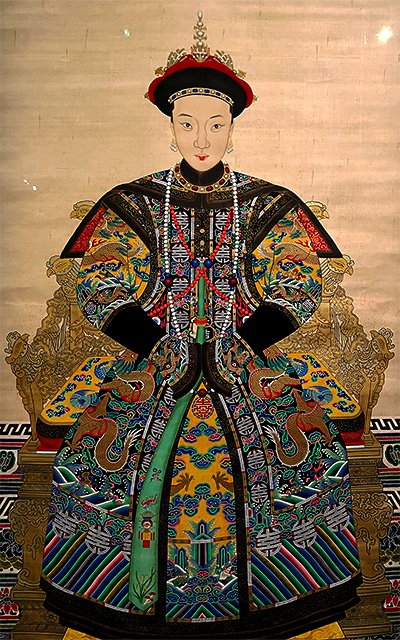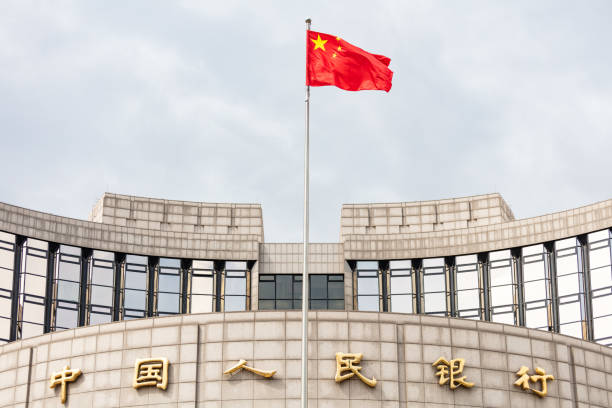It is becoming clearer an clearer that China will not be the leading power in tomorrow's world. Since the pandemic, China's economy and banking sector have been in dire straits. The country is looking for new sources of growth. At the BRICS summit, held in Johannesburg from August 22 to 24, Xi Jinping's government positioned itself as the leader of the movement and supported the expansion of the group to include six new countries.

Empress Xiaoqinxian, last leader of the Qing dynasty
The years of strong growth in China are well and truly over. After increasing average per capita income by a factor of 25 and lifting over 800 million people out of poverty and hunger, the Chinese economy is entering a new era.
On a quarterly basis, GDP grew by just 0.8% in the second quarter. Foreign trade is faltering, investment is declining, and youth unemployment exceeds 20%. In the absence of strong social measures, the country has never succeeded, as it had hoped since 2008, in orienting its model towards domestic consumption. Households are in debt and spend very little. Prices are even starting to fall, by 0.3% last July.
A simple analysis shows that the country is in a situation similar to that of Europe in the early 2010s: high public and private debt, sluggish growth, falling consumption, falling productivity, unfavorable demographics, a real estate sector in crisis, rising unemployment, and extremely low inflation (in this case, deflation). Or like the USSR in the 1950s, or Japan in the 80s and 90s.
The real estate sector has been in a deep crisis since the pandemic and the acceleration of demographic aging. Real estate developers are unable to pay off their colossal debts and are accumulating heavy losses after countless infrastructure and housing projects, some of which remain unused and uninhabited.
The giants of the sector, in particular Evergrande (declared bankrupt in the USA), are plunging on the stock market. These companies have many risky mortgages, some of which are subprime. This turbulence is having repercussions on the equity markets: the main stock market indices (SSE Composite Index and CSI 1000) have fallen by around 10% since the start of the year. But also on the yields of private and public companies (down steadily since 2018), while the overwhelming majority of private companies are finding it difficult to repay their short-term bonds (80%, according to a New York firm).
Like Europe and the United States in the early 2010s, Xi Jinping's government is responding to this situation by lowering interest rates. China's central bank has cut rates several times this year. It has also ordered state-controlled banks (the country's four largest banks are state-owned) to buy back shares and intervene on the foreign exchange market to limit the yuan's depreciation. A 50% reduction in the tax on stock market transactions was introduced. And in early August, the central bank supported the economy to the tune of 400 billion yuan (around $50 billion), without launching a massive stimulus package.
These solutions will also, and above all, lead to an even greater increase in private and public indebtedness, i.e. a fictitious gain of time in the face of a programmed and almost inevitable crisis.

Chinese Central Bank (@istock)
For the time being, this turbulence is mainly affecting Asia and emerging markets. In the future, they will have a greater or lesser influence on all countries in the world, due to the interdependence of international financial institutions. With almost $60 trillion in assets, China has the world's largest banking system. This situation is taking place at a time when inflation persists in the West (although the Chinese slowdown is leading to a fall in commodity prices) and long-term interest rates continue to rise. The outlook for global growth remains gloomy.
For the Chinese economy, the coming months are likely to be punctuated by mounting difficulties. More property giants could default on their debts, in particular Country Garden, which posted a record loss of seven billion dollars in the first half of the year. Equity markets are likely to be further shaken, and consumer confidence further dampened. However, the central bank has some room for manoeuvre to avoid a scenario similar to the 2007-2008 crisis.
Ultimately, the country could experience several years of weak economic growth. The IMF recently estimated that China's GDP will be less than 4% in the coming years, far lower than in the last four decades. All the more so as the country's demographic decline will drag growth down. China's population could fall to 1.17 billion by 2050, and as low as 587 million by 2100, in a country with a current population of over 1.4 billion.
The country's wealth creation will come mainly from foreign markets (the country has become the world's leading creditor), as well as investment in renewable energies and new innovations, notably electric vehicles and artificial intelligence.
Aware of these difficulties, and of the impossibility of becoming the world's leading power (as predicted by many experts in recent decades), China is looking beyond its borders. It is trying to play an active role in the world's geopolitical evolution, as demonstrated by the recent BRICS summit it organized. At this meeting, it was announced that six new countries had joined the group: Argentina, Egypt, Iran, Ethiopia, Saudi Arabia and the United Arab Emirates. This initiative was largely supported by China, while India remained skeptical.
Together, these new countries represent almost half the world's population, a third of the wealth produced, strategic zones (notably in the Middle East) and 80% of oil production in a world where 40% of final consumption is based on petroleum products.
This alliance also means the reunion of Latin America's two most important countries, Argentina and Brazil, which account for 80% of the continent's population and wealth. It also means the integration of a military power, Egypt, which joins China, Russia and India (countries with a nuclear arsenal and among the world's top five military powers).
The Group of Eleven declares a united front against the hegemonic American currency. This was one of the main topics of discussion at the Johannesburg summit, as non-dollar trade between these countries increases.
Many of these countries are also increasing their gold reserves, particularly China. For the ninth consecutive month, the country increased its gold reserves in August. According to official data, China is the world's sixth largest holder of gold. These purchases, like those of other central banks, keep gold prices high despite interest rate hikes.
The various initiatives put forward by this movement remain, for the moment, at an embryonic stage. While the alliance is intended as an opposition to the Western bloc and its institutions, several of these countries (particularly India and Brazil) remain close to the United States and Europe, both politically and economically. Ongoing conflicts between certain members of the BRICS (notably China and India over territorial issues), internal divisions over the group's evolution, and the economic and political diversities between these countries (their foreign trade, exchange rate differences, their various geopolitical positions,etc.) could further strain their relations.
This movement will have even greater influence when new international institutions are created, with greater decision-making power than the current ones (UN, IMF, World Bank,etc.). When international ceremonies and awards (Nobel prizes, university rankings,etc.) are no longer decided by Western countries, but by these countries themselves. Finally, when a currency supplants the dollar (or at least matches it, which is not the case for any currency to date). Such ambitions require, first and foremost, real unity between these countries. In view of their respective situations, we have every reason to believe that this will not happen any time soon.
Reproduction, in whole or in part, is authorized as long as it includes all the text hyperlinks and a link back to the original source.
The information contained in this article is for information purposes only and does not constitute investment advice or a recommendation to buy or sell.

















